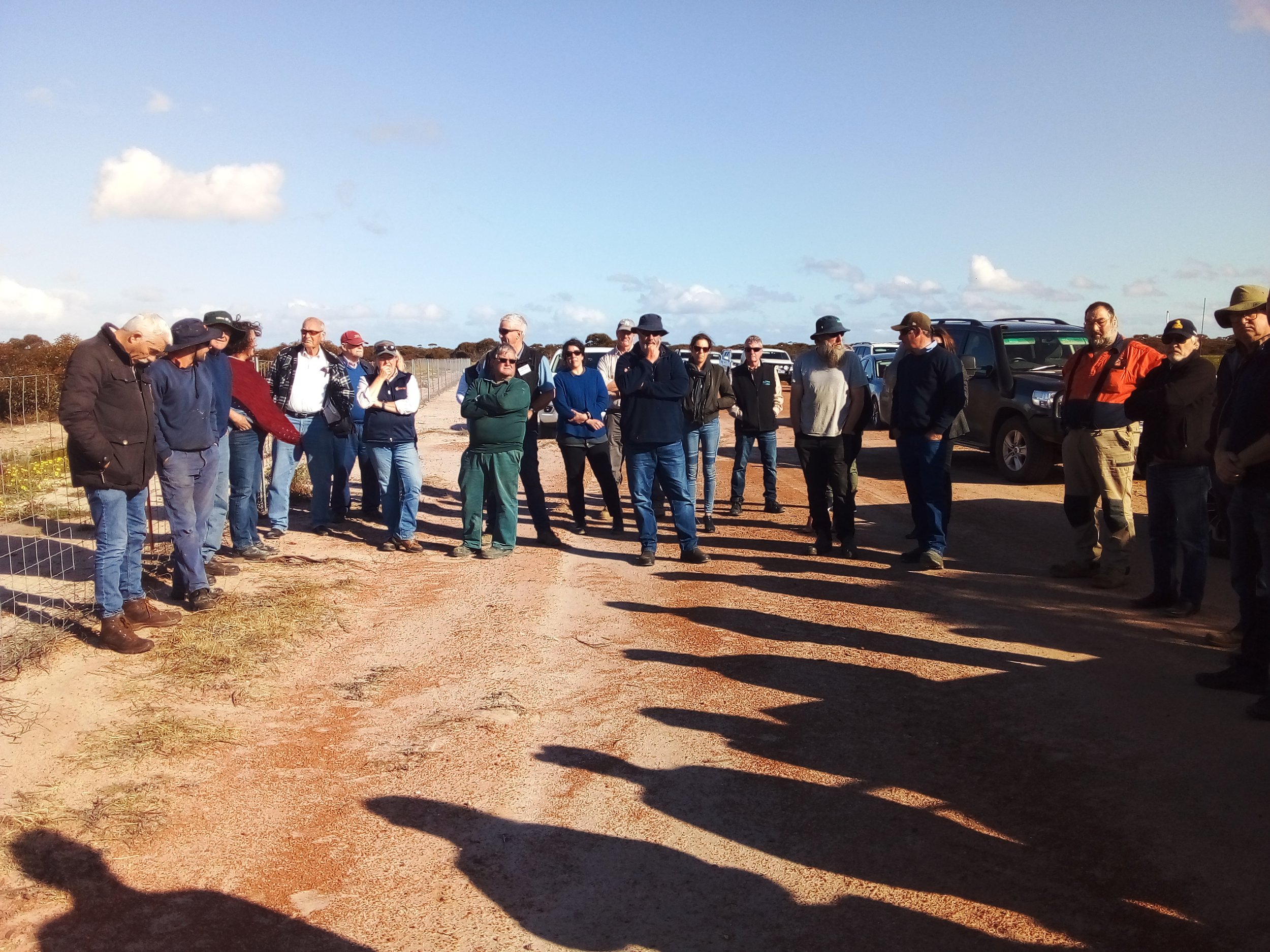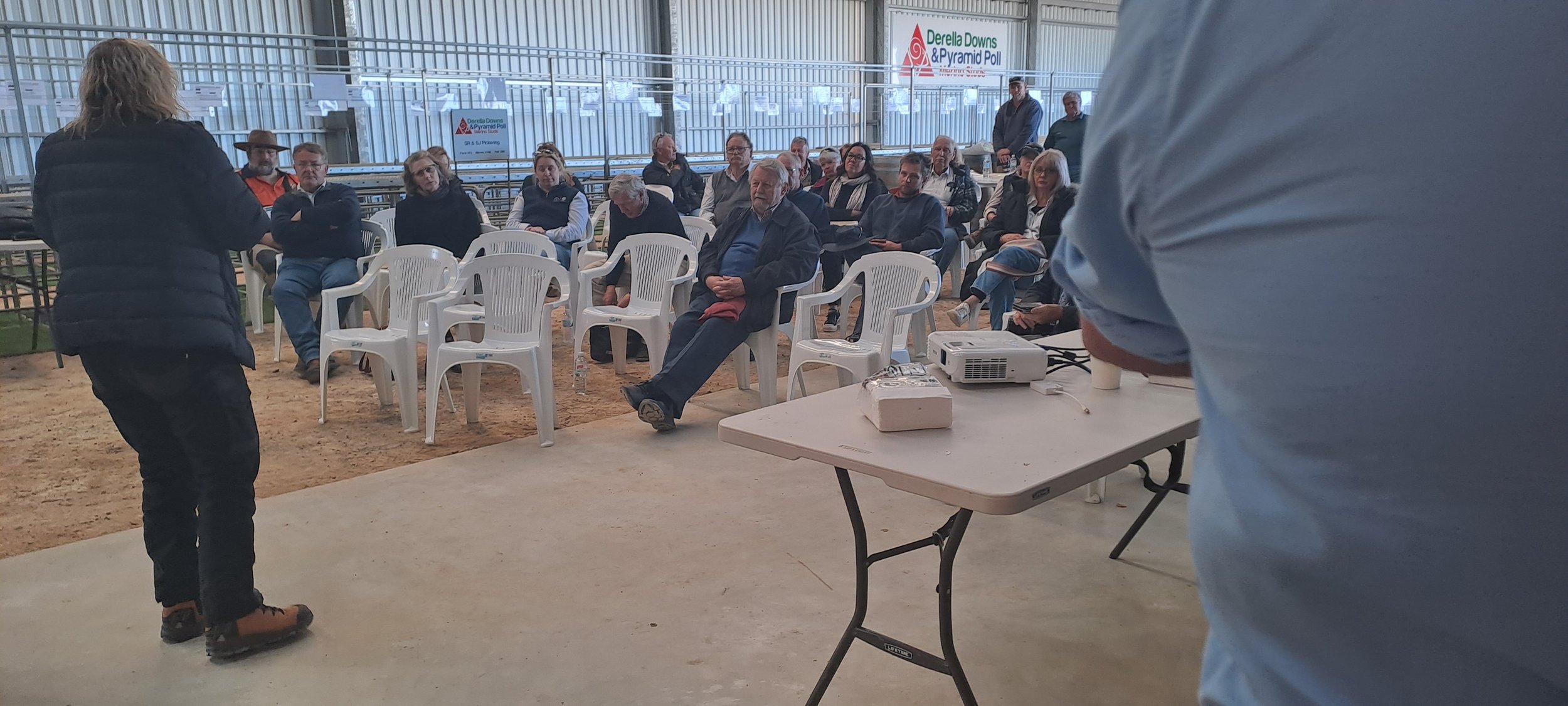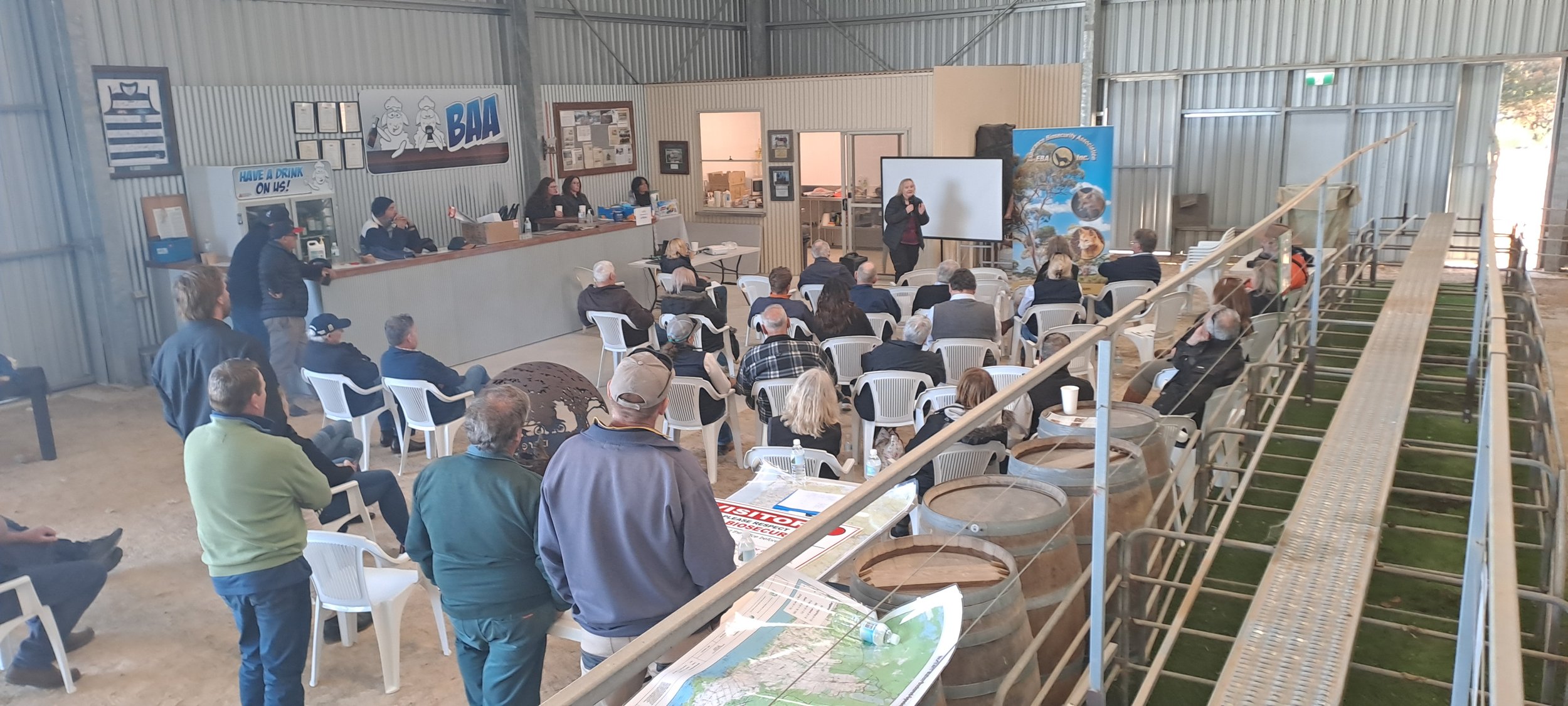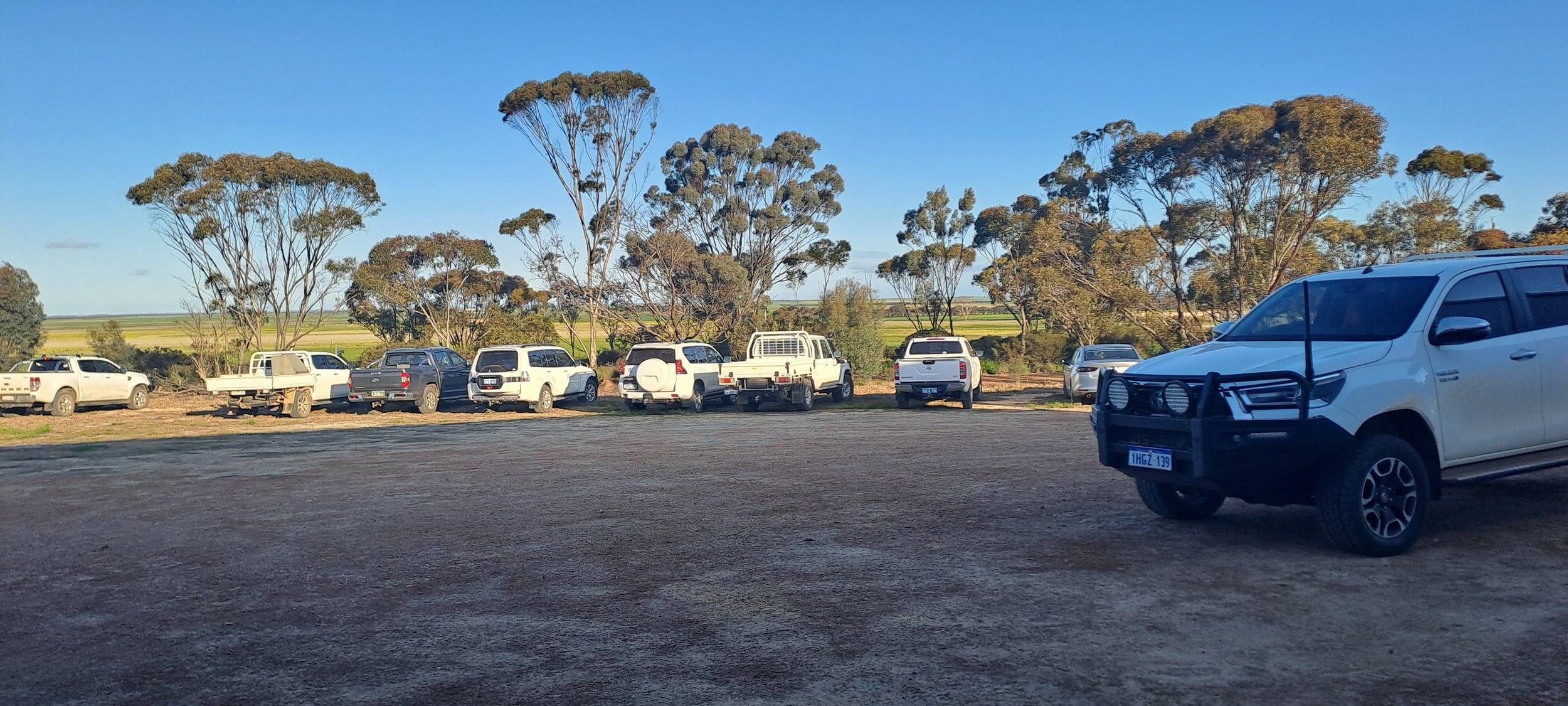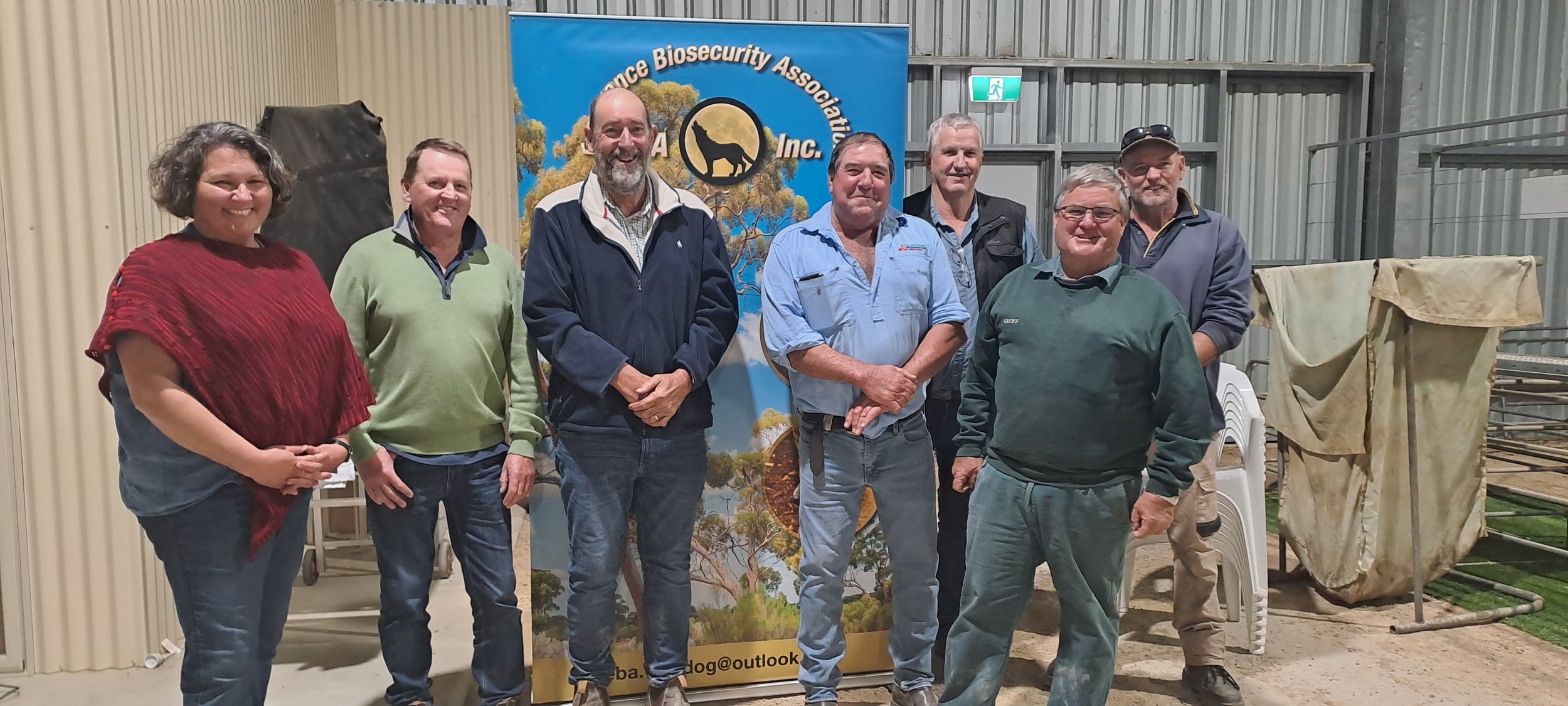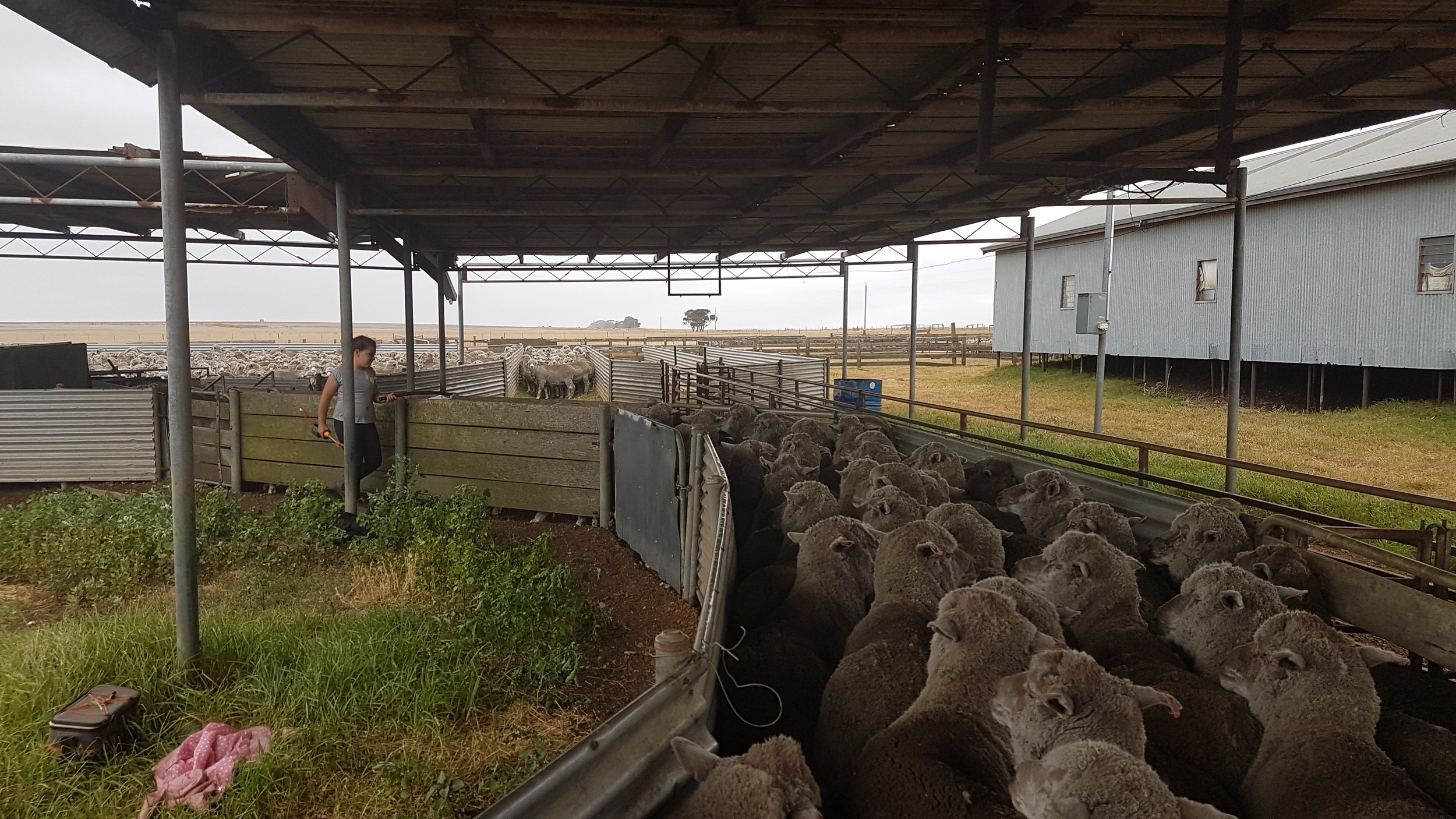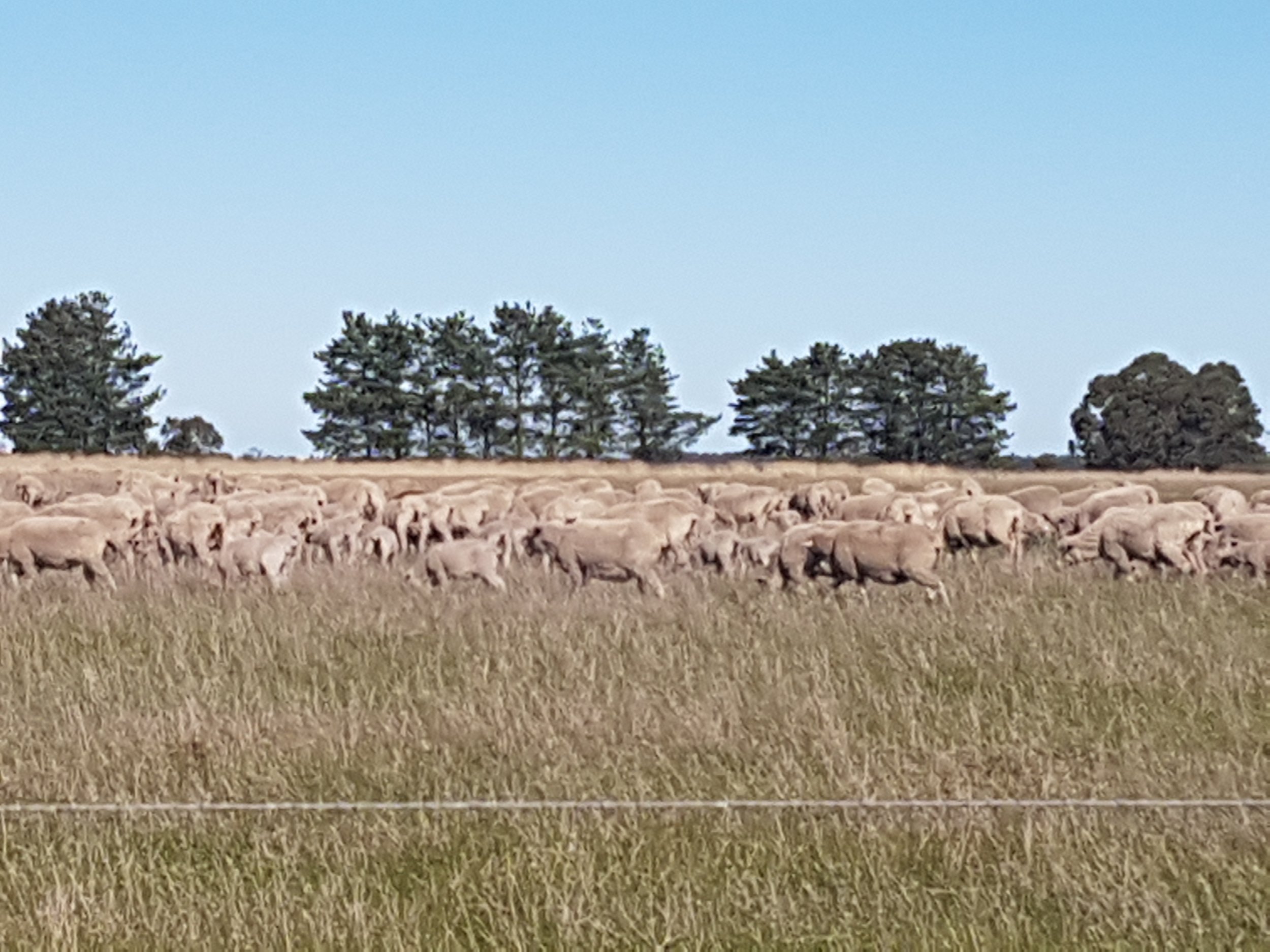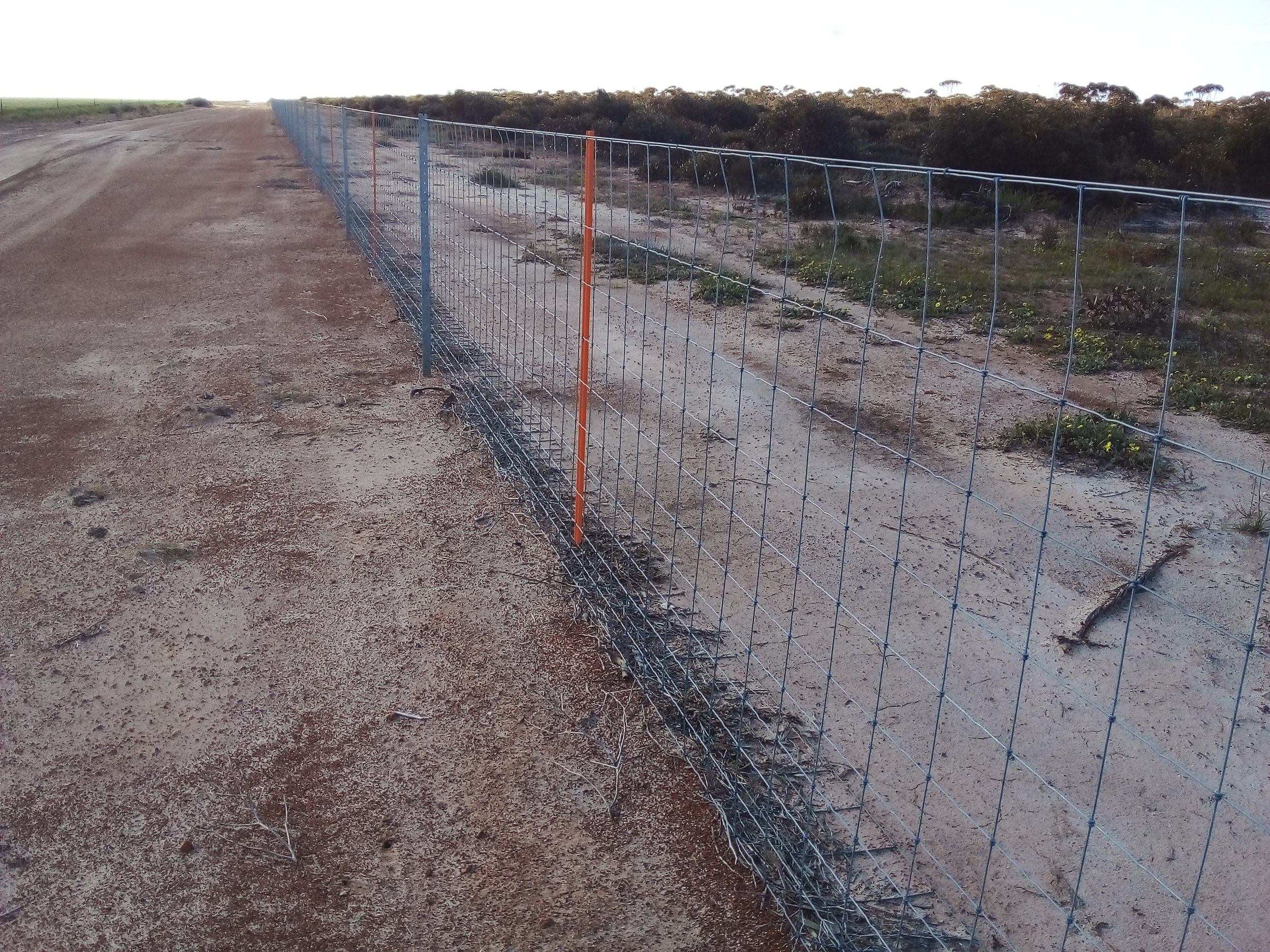
our history
The Esperance Biosecurity Association originally formed as the Northern Mallee Declared Species Group (NMDSG) which was formed at Salmon Gums in 2004 following a spike in wild dog attacks on sheep around Esperance. They recognised that the problem was wide spread and required coordination and funding.
The group began to lobby government agencies for more support and secured funding for two full-time Doggers. At the same time, it sought a more permanent solution to the problem of wild dog attacks and considered the idea of extending the State Barrier Fence. By 2007, the group had gained a direct link to the State Barrier Fence Committee and the State Wild Dog committee when Cascades farmer and NMDSG member Scott Pickering took up a position on these boards. An added benefit of the fence extension was its ability to control the movement of emu flocks, which were impacting on properties bordering unallocated crown land.
In 2009, the NMDSG began the process of incorporation and in April of 2010 it held its inaugural Annual General Meeting. Almost 100 members signed up in the first year with several corporate members and sponsors among them. The NMDSG now employs a part time administrator and two full-time Doggers, as well as hosting information days for landholders and distributing newsletters.
The innovative group has also sought other solutions to the wild dog problem, in particular the trialing of white Maremma guard dogs. The breed originated in central Italy and has been used for centuries by shepherds to guard sheep from wolves. Six dogs were donated by the Australian Dingo Conservation Association, and these have been distributed to members. This trial proved unsuccessful.
Since the 2010 announcement by the State Government to provide funding to the NMDSG for fence materials, the group has been focused on raising the necessary funds to complete the State Barrier Fence extension.
The Honourable Mark Lewis MLC Minister for Agriculture and Food gave consent to recognition for Northern Mallee Declared Species Group Inc to become a Recognised Biosecurity Group for the purposes of section 169 of the Biosecurity and Agriculture Management Act 2007, on the 23rd February 2017
In May 2017 the Northern Mallee Declared Species Group Inc. officially changed the group's name to Esperance Biosecurity Association Inc. to show better representation for all landholders within the group's operational area.
The Esperance Biosecurity Association is the community driver of the proposal to construct an extension to the State Barrier Fence, to extend around the Esperance Agricultural area. This is the long term answer to controlling the wild dog problem.
Frequently Asked Questions
-
The State Barrier Fence (SBF) was built in the early part of the 20th century to protect Western Australia from the western migration of the rabbit. Whilst the fence failed to keep the rabbit out of the state, the SBF did prove in later years to be an effective barrier against migrating emus. Today the SBF spans 1,170 kilometres from the Zuytdorp Cliffs north of Kalbarri to Jerdacuttup east of Ravensthorpe. It is maintained by the Agriculture Protection Board (APB) and the WA Department of Agriculture and Food (DAFWA).
-
The extension of the State Barrier Fence is an effective, long-term solution to the wild dog and emu plague in Western Australia. It will provide a natural system outside of the fence where species can interact without the presence of crops and sheep, as well as provide a sustainable environment inside for primary production.
Over the past 20 years, an increased incidence of wild dog activity has been reported adjacent to the SBF from Lake Moore in the Mt Marshall shire, to Ravensthorpe and eastwards through the Esperance Shire. The engagement of doggers has helped to prevent wild dog attacks on livestock but has not addressed the emu plague problem and will not provide the level of control that the fence will.
Once established, the fence would provide a non-lethal barrier to emus, kangaroos and dogs between the farming communities and unallocated crown land to the North.
Additional benefits include the maintenance of a firebreak along the fence line as well as an injection of additional revenue to the local economy during the surveying and construction of the fence.
-
Dogs impact heavily on the livestock industry by maiming and killing approximately 4,000 animals every year in the Ravensthorpe and Esperance areas. These often gruesome stock deaths place excessive economic and emotional burdens on rural families. Emu plagues cause massive crop and pasture damage and reduce yields by up to 75% depending on densities. This also impacts on the local economy as a whole.
-
Smaller native reptiles and mammals can still move freely through the fence. The WA Department of Environment and Conservation suggests there is little adverse impact on non-target native species. None of the larger terrestrial species in the region are migratory.


